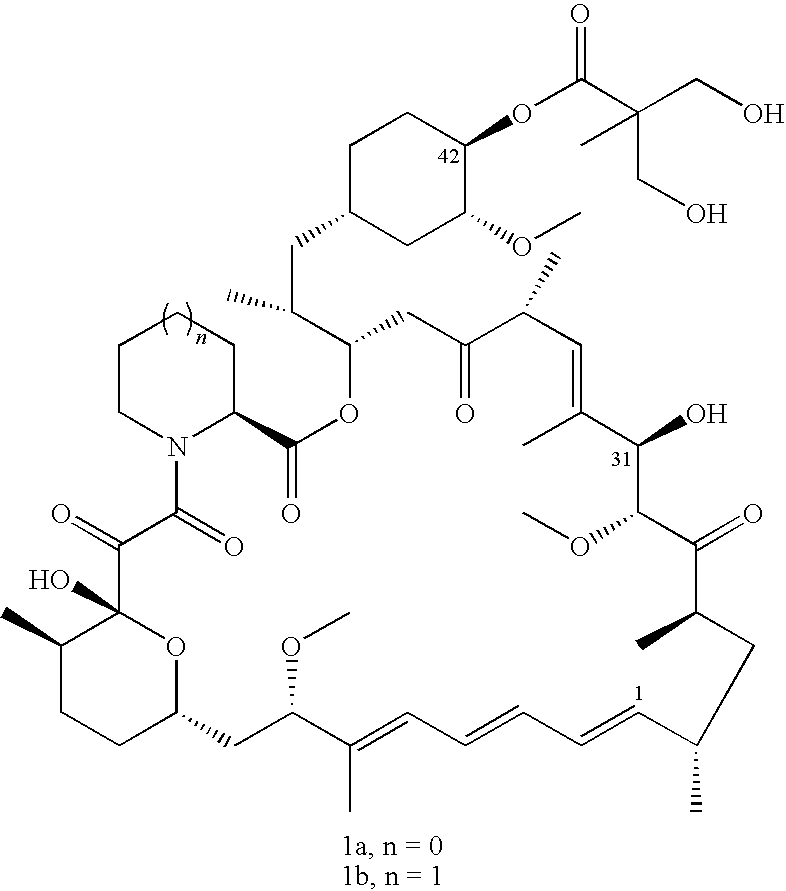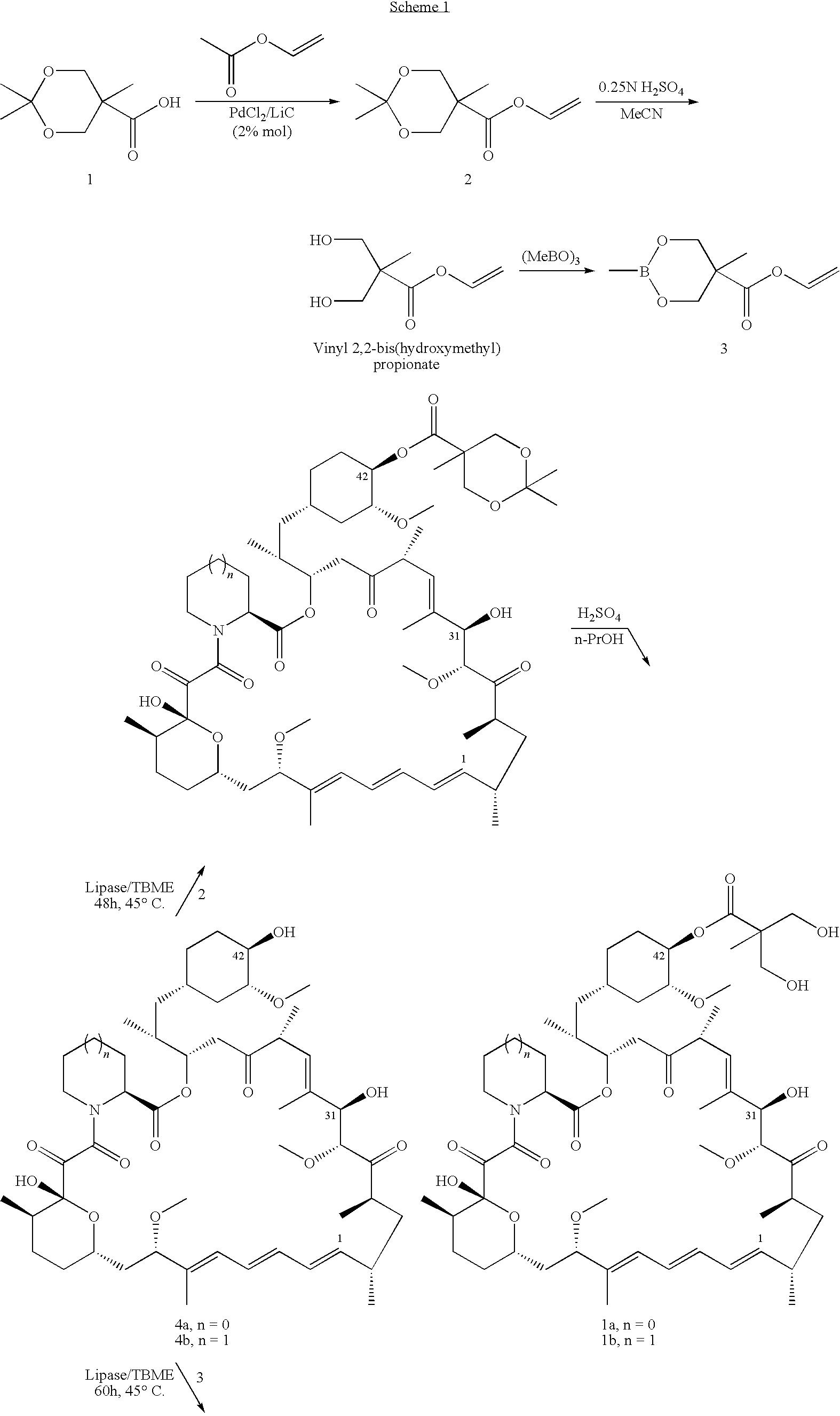Process for preparation of temsirolimus
a technology of temsirolimus and temsirolimus, which is applied in the field of process for preparation of temsirolimus, can solve the problems of irritant 2,4,6-trichlorobenzyl chloride, insufficient commercial scale synthesis of mixed anhydride, and high cos
- Summary
- Abstract
- Description
- Claims
- Application Information
AI Technical Summary
Benefits of technology
Problems solved by technology
Method used
Image
Examples
example 1
A. Synthesis of Isopropylidene-2,2-bis(methoxy) propionic acid (Compound 13)
[0032]2-2-bis(hydroxymethyl) propionic acid (50.0 g, 372.8 mmol), 2,2-dimethoxypropane (69 ml, 545.4 mmol); p-tolylsulfonic acid (3.6 g, 18.7 mmole) and acetone (250 ml) are charged into a reaction flask.
[0033]The reaction mixture is agitated at room temperature for two hours, and is dropwise added therein with solution of ammonium hydroxide / ethanol (5 ml, 50 / 50, v / v). After the dropwise addition, the mixture is further agitated for 10 minutes, concentrated, and added therein with dichloromethane (1250 ml). It is then washed twice with water (100 ml), dried and concentrated to obtain Isopropylidene-2,2-bis(methoxyl) propionic acid, a white solid product (53.6 g), with a yield of 82.6%.
B. Synthesis of Isopropylidene-2,2-bis(methoxy) propionic acid anhydride (Compound 11a)
[0034]Isopropylidene-2,2-bis(methoxy) propionic acid (30.0 g, 172.4 mmol) is dissolved in dichloromethane (150 ml). Then, 1,3-dihexylcarbodi...
example 2
A. Synthesis of Rapamycin 31-O-triethylsilyl ether [Compound 4d, R═Si(CH2CH3)3]
[0039]In a reaction flask, rapamycin (5.0 g, 5.5 mmol) and dichloromethane (75 ml) are added, with nitrogen fed therein, and the temperature of the reaction mixture is reduced to 0˜5° C., then added with imidazole (1.5 g, 22.0 mmol), under agitation until completely miscible. Chlorotriethylsilane (3.1 g, 20.2 mmol) is dropwise added therein. After dropwise addition, the reaction mixture is agitated at 0˜5° C. for 30 minutes.
[0040]It undergoes the reaction at room temperature for 1.5 hours. Then, it is filtered and added with ethyl acetate (160 ml), and further washed with water (81 ml×3) and brine (33 ml). After drying and concentrating, a yellow oily product of rapamycin 31,42-bis-triethylsilyl ether (14) is obtained. Acetone (60 ml) is added and the temperature is reduced to 0˜5° C. Aqueous solution of sulfuric acid (0.15N, 15 ml) is added dropwise and the reaction is conducted for one hour. Ethyl aceta...
PUM
| Property | Measurement | Unit |
|---|---|---|
| temperature | aaaaa | aaaaa |
| temperature | aaaaa | aaaaa |
| temperature | aaaaa | aaaaa |
Abstract
Description
Claims
Application Information
 Login to View More
Login to View More - R&D
- Intellectual Property
- Life Sciences
- Materials
- Tech Scout
- Unparalleled Data Quality
- Higher Quality Content
- 60% Fewer Hallucinations
Browse by: Latest US Patents, China's latest patents, Technical Efficacy Thesaurus, Application Domain, Technology Topic, Popular Technical Reports.
© 2025 PatSnap. All rights reserved.Legal|Privacy policy|Modern Slavery Act Transparency Statement|Sitemap|About US| Contact US: help@patsnap.com



